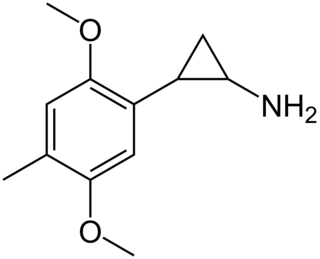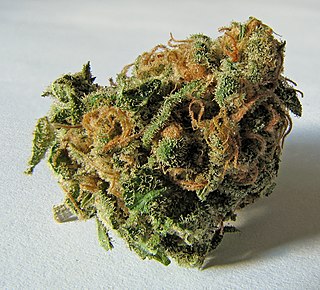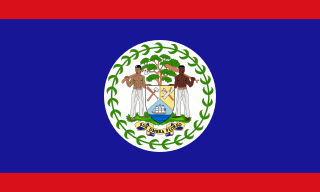
The Misuse of Drugs Act 1971 is an Act of the Parliament of the United Kingdom. It represents action in line with treaty commitments under the Single Convention on Narcotic Drugs, the Convention on Psychotropic Substances, and the United Nations Convention Against Illicit Traffic in Narcotic Drugs and Psychotropic Substances.
Misuse of Drugs Act is the name of several similar national drug control laws passed by countries in the Commonwealth of Nations and by the Republic of Ireland. With the exception of Ireland's 1977 Act, they all sort drugs into three categories, Classes A, B, and C. This classification system was influenced by the Single Convention on Narcotic Drugs and other drug control treaties.

The Misuse of Drugs Act 1975 is a New Zealand drug control law that classifies drugs into three classes, or schedules, based on their projected risk of serious harm. In December 2018, the Labour-led Coalition Government passed a law permitting the used of medical cannabis for terminally ill patients.

The Misuse of Drugs Act is a drug control law in Singapore classifying substances into three categories, Classes A, B, and C. Section 44 provides that "The Minister may, by an order published in the Gazette" add, remove, or transfer drugs among the classes. The statute's penal provisions are severe by most nations' standards, providing for long terms of imprisonment, caning, and capital punishment. The law creates a presumption of trafficking for certain threshold amounts, e.g. 30 grams of cannabis. It also creates a presumption that a person possesses drugs if he possesses the keys to a premises containing the drugs, and that "Any person found in or escaping from any place or premises which is proved or presumed to be used for the purpose of smoking or administering a controlled drug shall, until the contrary is proved, be presumed to have been smoking or administering a controlled drug in that place or premises." Thus, one runs the risk of arrest for drug use by simply being in the company of drug users. The law also allows officers to search premises and individuals, without a search warrant, if he "reasonably suspects that there is to be found a controlled drug or article liable to seizure". Moreover, Section 31 allows officers to demand urinalysis of suspected drug offenders.
A controlled substance is generally a drug or chemical whose manufacture, possession, or use is regulated by a government, such as illicitly used drugs or prescription medications that are designated by law. Some treaties, notably the Single Convention on Narcotic Drugs, the Convention on Psychotropic Substances, and the United Nations Convention Against Illicit Traffic in Narcotic Drugs and Psychotropic Substances provide internationally agreed upon "schedules" of controlled substances, which have been incorporated into national laws, however national laws usually significantly expand on these international convention.

para-Methoxyphenylpiperazine is a piperazine derivative with stimulant effects which has been sold as an ingredient in "Party pills", initially in New Zealand and subsequently in other countries around the world.

3,4-Methylenedioxy-N-methylphentermine (MDMP), or 3,4-methylenedioxy-α,α,N-trimethylphenethylamine, is a lesser-known psychedelic drug. MDMP was first synthesized by Alexander Shulgin. In his book PiHKAL , the minimum dosage is listed as 110 mg, and the duration is listed as approximately 6 hours. MDMP produces few to no effects, and is slightly similar to MDMA. Very little data exists about the pharmacological properties, metabolism, and toxicity of MDMP.

3,4-Methylenedioxyphentermine (MDPH) is a lesser-known psychedelic drug. MDPH was first synthesized by Alexander Shulgin. In his book PiHKAL , the dosage range is listed as 160–240 mg, and the duration as 3–5 hours. MDPH's effects are very similar to those of MDA: they both are smooth and "stoning," and do not cause any visuals. They also alter dreams and dream patterns. Shulgin describes MDPH as a promoter; it promotes the effects of other drugs, similarly to 2C-D. Very little data exists about the pharmacological properties, metabolism, and toxicity of MDPH.

DMCPA, or 4-methyl-2,5-methoxyphenylcyclopropylamine, is a lesser-known psychedelic drug and a substituted amphetamine. DMCPA was first synthesized by Alexander Shulgin. In his book PiHKAL , the dosage range is listed as 15–20 mg, and the duration is listed as 4–8 hours. DMCPA produces open-eye visuals, anorexia, and psychedelic dreams. Shulgin gives it a +++ on the Shulgin Rating Scale.

F-22 is a lesser-known psychedelic drug. F-22 was first synthesized by Alexander Shulgin. In his book PiHKAL , the minimum dosage is listed as 15 mg, and the duration unknown. F-22 produces few to no effects. Very little data exists about the pharmacological properties, metabolism, and toxicity of F-22.

The use of cannabis in New Zealand is regulated by the Misuse of Drugs Act 1975, which makes unauthorised possession of any amount of cannabis a crime. Cannabis is the fourth-most widely used recreational drug in New Zealand, after caffeine, alcohol and tobacco, and the most widely used illicit drug. In the population of more than four million, 13.4% of those aged 16–64 use cannabis. This ranks as the ninth-highest cannabis consumption level in the world.
Drug prohibition law is prohibition-based law by which governments prohibit, except under licence, the production, supply, and possession of many, but not all, substances which are recognized as drugs, and which corresponds to international treaty commitments in the Single Convention on Narcotic Drugs 1961, the Convention on Psychotropic Substances 1971, and the United Nations Convention Against Illicit Traffic in Narcotic Drugs and Psychotropic Substances 1988.
Drugs controlled by the United Kingdom (UK) Misuse of Drugs Act 1971 are listed in this article. These drugs are known in the UK as controlled drugs, because this is the term by which the act itself refers to them. In more general terms, however, many of these drugs are also controlled by the Medicines Act 1969, there are many other drugs which are controlled by the Medicines Act but not by the Misuse of Drugs Act, and other substances which may be considered drugs are controlled by other laws.
The production, distribution, and sale of methamphetamine is restricted or illegal in many jurisdictions.
Drugs considered addictive or dangerous in the United Kingdom are called "controlled substances" and regulated by law. Until 1964 the medical treatment of dependent drug users was separated from the punishment of unregulated use and supply. Under this policy drug use remained low; there was relatively little recreational use and few dependent users, who were prescribed drugs by their doctors as part of their treatment. From 1964 drug use was decreasingly criminalised, with the framework still in place as of 2014 largely determined by the Misuse of Drugs Act.

RCS-4, or 1-pentyl-3-(4-methoxybenzoyl)indole, is a synthetic cannabinoid drug sold under the names SR-19, BTM-4, or Eric-4, but originally, OBT-199.
The presumption of supply is a rebuttable presumption in criminal law which is governed by the New Zealand Misuse of Drugs Act 1975. It provides an assumption in drug-possession cases that if a person is found with more than a specified amount of a controlled drug, they are in possession of it for the purpose of supply or sale. This shifts the burden of proof from the Crown to the person found with the drug, who must prove that they possessed it for personal use and not for supply. Note that once the burden of proof has shifted, the burden is one on the balance of probabilities. This presumption exists to make prosecution for supplying drugs easier. In 2007, the Supreme Court ruled that the presumption of supply is inconsistent with section 25(c) of the New Zealand Bill of Rights Act 1990.

Hexedrone is a stimulant of the substituted cathinone class. Through analysis of the Structure-Activity Relationships in similar cathinones such as MDPV, Hexedrone is believed to be a norepinephrine–dopamine reuptake inhibitor.
Cannabis in Ireland is illegal for recreational purposes. Use for medical purposes requires case-by-case approval by the Minister for Health. A bill to legalise medical uses of cannabis passed second reading in Dáil Éireann in December 2016.
The use of cannabis in Belize is common and largely tolerated; however, possession can result in fines or imprisonment. Possession or use of 10 grams or less on private premises was decriminalized in November 2017.













